Among the world’s largest and most varied groups of flowering plants are orchids.The orchid family is one of the nicest flowering plant families to have in your garden, with over 25,000 different varieties that originate from every continent except Antarctica.
Our favourite orchid species have been collected here; ready to be planted in our garden or on a windowsill. You can become an expert in fancy orchids easily if you choose the proper plants for your needs and skill levels.
1. Nun Orchid
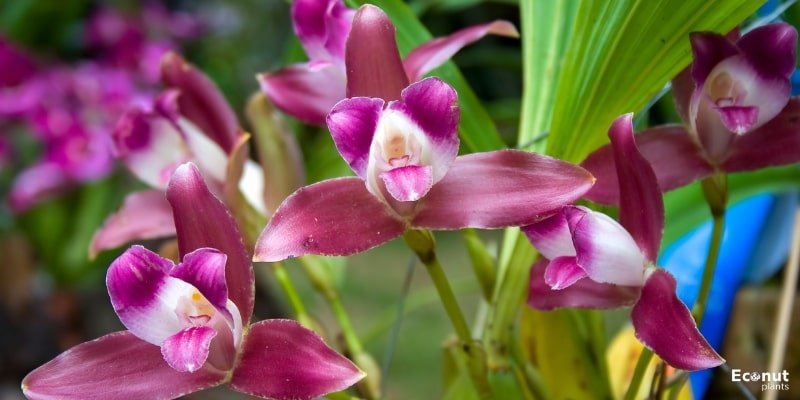
Scientific Name: Lycaste virginal
Plant Size: 6 inches
Sun Exposure: Bright shade
Many people appreciate and cherish this orchid because of its wonderful scent and incredibly huge, gorgeous triangular blossoms. Owing to its widespread export since its discovery, the bloom is quite uncommon in the wild.
Pure white plants are the most sought-after among the species, which vary in size, colour, and shape. Apricot and light purple are some of the other hues. The yellow, tongue-shaped lip callus is present.
Named “Monja Blanca” or “White Nun” in Guatemala, the pure white versions are regarded as the country’s national flower. Like its native habitat of higher elevations, L. virginalis is a versatile and hardy plant that prefers milder temperatures.
2. Vanda Orchids
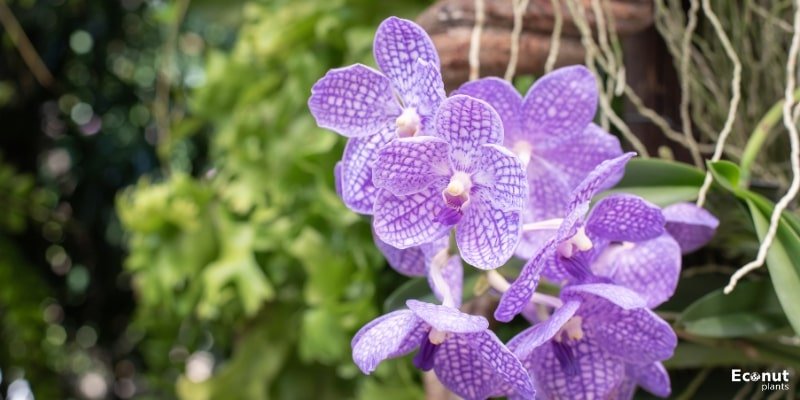
Scientific Name: Vanda spp.
Plant Size: 2–10 inches tall
Sun Exposure: Full sun
Vanda orchids are a genus of roughly 80 species that are prized for their fragrant and enduring blossoms and infinite colour variations. It’s common to see these orchids growing in hanging baskets with lots of air exposed to their roots.
Even though Vanda orchids bloom twice or three times a year, they are notoriously difficult to grow since they need a lot of light and high humidity.
3. Dendrobium Orchid
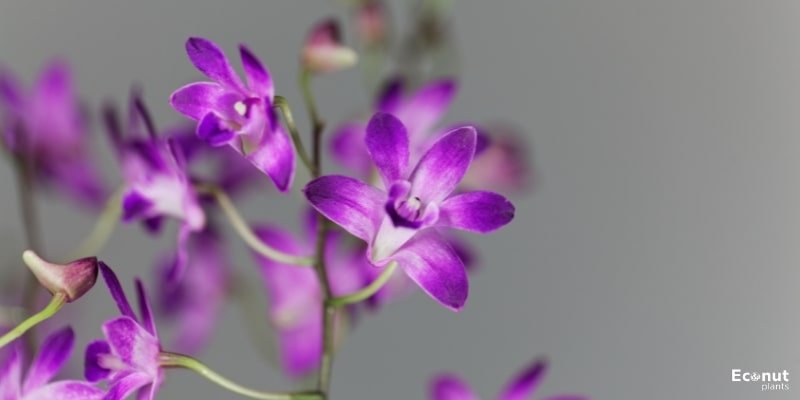
Scientific Name: Dendrobium spp
Plant Size: 6–48 inches
Sun Exposure: Direct sunlight
Growing Cymbidium orchids is a simple task. Their colourful flowers bloom from late winter to early April. Cool growing environments are preferred for cymbidiums. They require a noticeable decrease in temperature from mid-to-late summer to flower successfully.
4. Moth Orchid
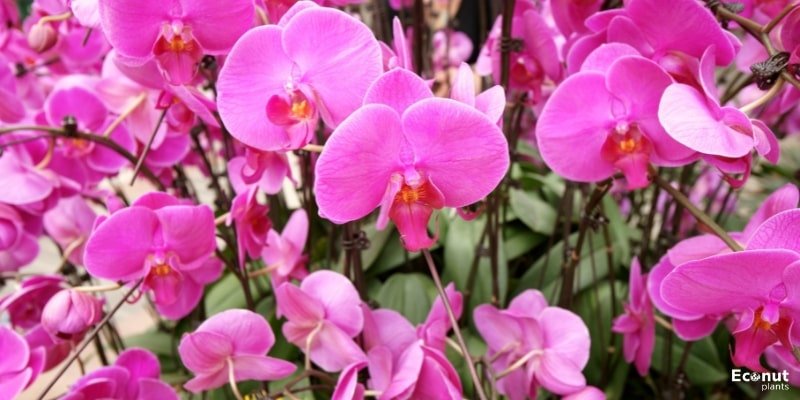
Scientific Name: Phalaenopsis
Plant Size: 6- 8 inches
Sun Exposure: Direct sunlight
These are the most widely available orchids for domestic usage. They make great gifts and are readily available at big box retailers and garden centers. Flowers are available in a matte white hue, arranged in a spray, and last for months. With a comparatively small lip, the petals and sepals are flat and broad.
The plant needs to be watered all year round and has multiple blooms per year. Grow them close to an east-facing window in a warm location with around 50% humidity, even though they can withstand low light levels in a house.
5. Venus Slipper Orchid
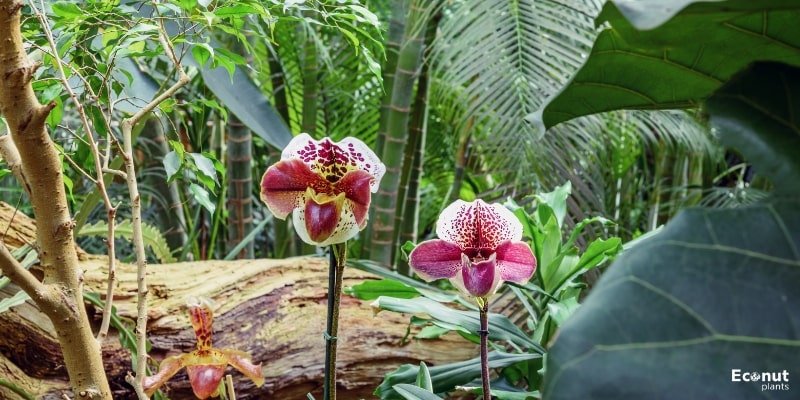
Scientific Name: Paphiopedilum gratrixianum
Plant Size: 10–12 in
Sun Exposure: Partial Sun
Paphiopedilum orchids, one of the many varieties of slipper orchids, are incredibly distinctive because of their dramatically flared side petals and slipper-shaped pouch.
Although they are tougher to locate since they are hard to propagate, the challenge is well worth it because of their stunning blossoms. It is important to maintain the humidity because they are highly sensitive to dry air.
6. Miltonia Orchids

Scientific Name: Miltonia
Plant Size: 1-2 ft. tall
Sun Exposure: Bright sunlight
Except for the most knowledgeable orchid enthusiasts, Miltonia orchids are frequently referred to as pansy orchids. On the other hand, Miltoniopsis orchids, which strongly resemble pansies, are referred to as pansy orchids.
Miltonia orchids have big, eye-catching flowers that, if you can get yours to bloom, are well worth the effort, even if they don’t resemble pansies.
7. Tiger-Stripe Orchid

Scientific Name: Cymbidium Iridioides
Plant Size: 4-12 in
Sun Exposure: Partial
This plant bears four to seven persistent blooms and grass-like leaf blades with a yellowish base. The yellow flowers have spreading petals with brown stripes. It has a ruffled edge with big erratic red spots.
There is a hint of fragrance to the blossoms. Trigona bees are pollinators of many species of Cymbidium. The lip of the orchid flower contains a sticky substance that resembles wax, which bees use to cover crevices in their nests.
In horticulture, C. iridioides is highly valued and has been employed in hybridization. The species is an epiphyte on mossy trees, rocks, and limestone cliffs, and it typically inhabits moist woodlands.
8. Epidendrum Orchid
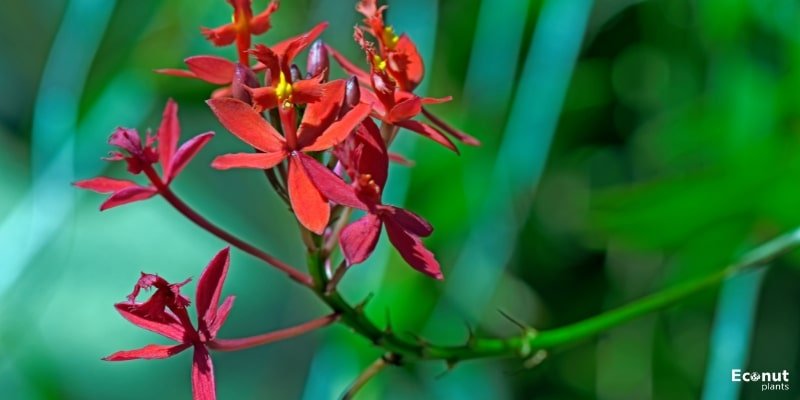
Scientific Name: Epidendrum
Plant Size: 6 feet tall
Sun Exposure: Bright, Filtered
The Epidendrum orchid family, which has many species with different sizes and pseudobulbs or cane-like stems, is perfect for indoor growth. In warmer climates, though, they can be cultivated outside, especially in Florida.
Although epidendrums require little care, their flowers are extremely fragrant and almost always in bloom. Warm weather, bright light that is filtered, and high humidity are what plants want.
9. Corsage Orchid
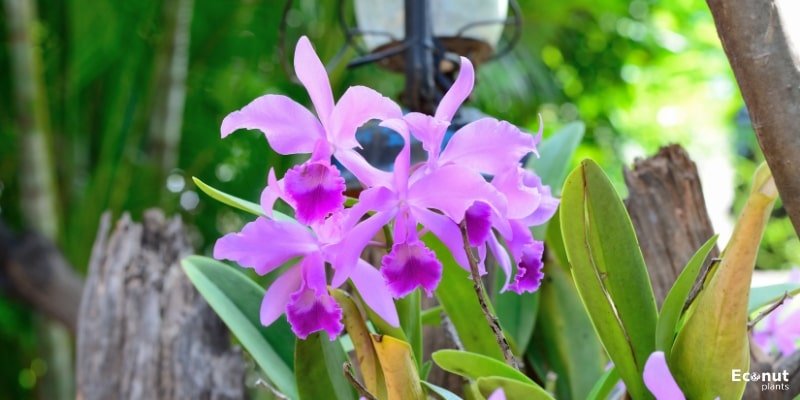
Scientific Name: Cattleya
Plant Size: 3 to 24 inches
Sun Exposure: Bright, indirect light
These are the big, fragrant blooms that corsages are commonly made out of. Typically, the lip is big, noticeable, frilly, and has a hue that contrasts with the petals. Though the plant is not very tall overall, each blossom is five to eight inches in diameter. Bright light and moderate warmth are required for caterpillars.
Watering the plants should be done sparingly in the fall and winter after they have finished growing. This genus has undergone a great deal of breeding, resulting in a wide range of coloured cultivars. Before the Phalaenopsis (Moth Orchid) became well-known, these were highly popular.
10. Dancing Lady Orchid
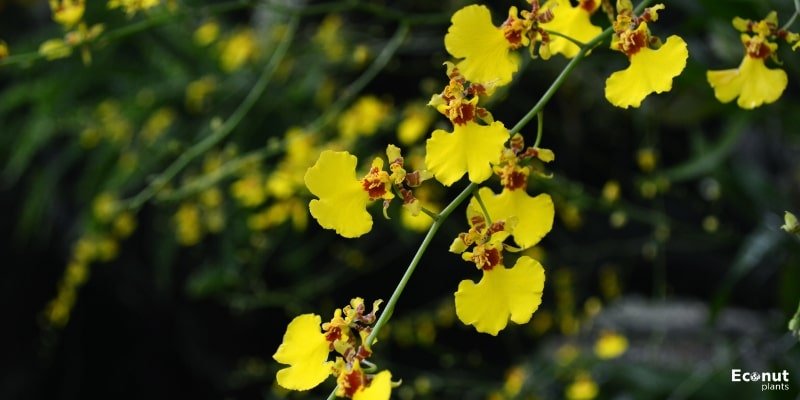
Scientific Name: Oncidium
Plant Size: 8–16 Inches tall
Sun Exposure: Direct sunlight
This Oncidium orchid plant, in contrast to the others mentioned above, prefers to sprawl out and produce an abundance of tiny blossoms. With dozens of blooms that persist for months, this lovely orchid blooms in late summer or early fall.
But since it thrives in a terrarium with constant temperatures and humidity levels above 40%, it might not be a good fit for every house.
11. Clamshell Orchid
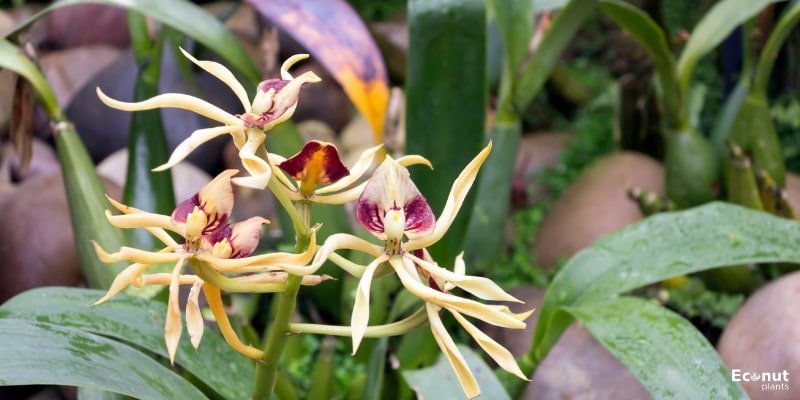
Scientific Name: Prosthechea cochleata
Plant Size: 1-2 Inches tall
Sun Exposure: Bright Indirect Light
This is another very unique orchid that grows easily. The purple, clam-shaped flowers of the clamshell orchid with chartreuse sepals that resemble tropical tentacles. Long-lasting blooms are produced by a mature plant in abundance. It can be in bloom for the entire year.
12. ‘Sharry Baby’ Oncidium
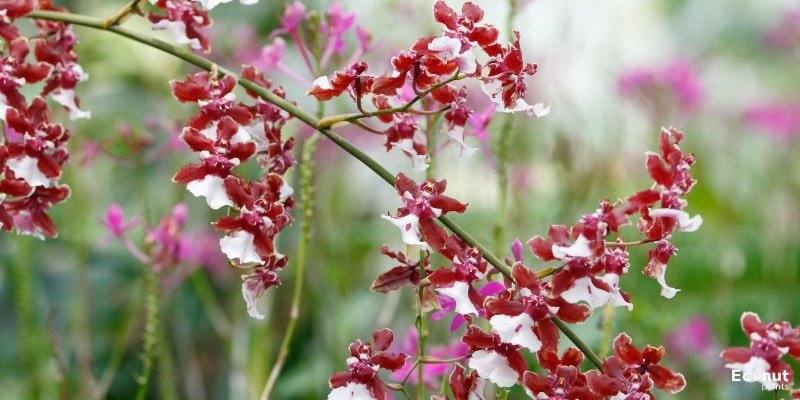
Scientific Name: Oncidium Sharry Baby
Plant Size: 8–10 in
Sun Exposure: Bright, Indirect light
Oncidium ‘Sharry Baby’ is a plant that is sure to win you over if you enjoy the smell of freshly cooked brownies. This is a profuse flowering plant that fills a room with a light chocolate scent and 1-inch red flowers marked with white. Similar to other oncidiums, “Sharry Baby” has flower stalks adorned with several little blooms.
13. The Black-Lipped Orchid

Scientific Name: Coelogyne pandurata
Plant Size: 4 inches
Sun Exposure: Direct sun
The Coelogyne pandurata, often known as the black-lipped orchid, is named for its dramatic black-striped center and ghostly greenish-white petals.
Up to 15 flowers can be found in each raceme when these massive beauties bloom. Each blossom is several inches in diameter and has a duration of around one week. These stunning orchids also have a distinct honey scent.
14. Lady of the Night Orchid
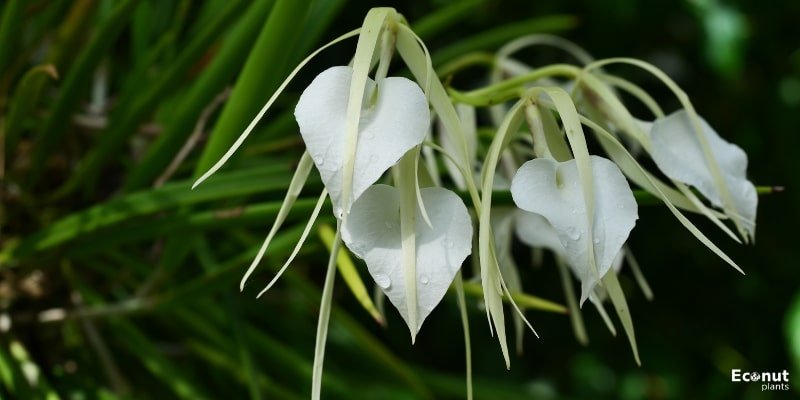
Scientific Name: Brassavola nodosa
Plant Size: 12-18 in
Sun Exposure: Indirect Sunlight
The beautiful smell of the Lady of the Night orchid (Brassavola nodosa), which is most abundant at night, is partly responsible for the orchid’s name. Lady of the Night orchids typically bloom more than once a year, in contrast to most orchids that only bloom once. You can expect it to bloom in the winter or fall and then perhaps again in the spring.
15. Fox Tail Orchid
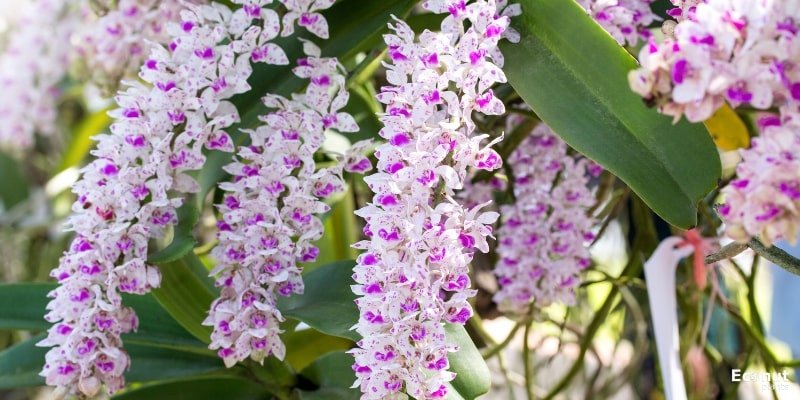
Scientific Name: Rhynchostylis gigantea
Plant Size: Up to 3 feet
Sun Exposure: Bright, filtered sunlight
When in full bloom, the long inflorescence of flowers on the Rhynchostylis gigantea orchid species might resemble a fluffy foxtail.
The inflorescence reaches approximately 15 inches in length. The orchid’s blossoms exhibit a variety of colours and patterns due to its extensive distribution throughout the Asian continent. They can have white spots on them, be red, or even have full magenta.
16. Mokara Orchids
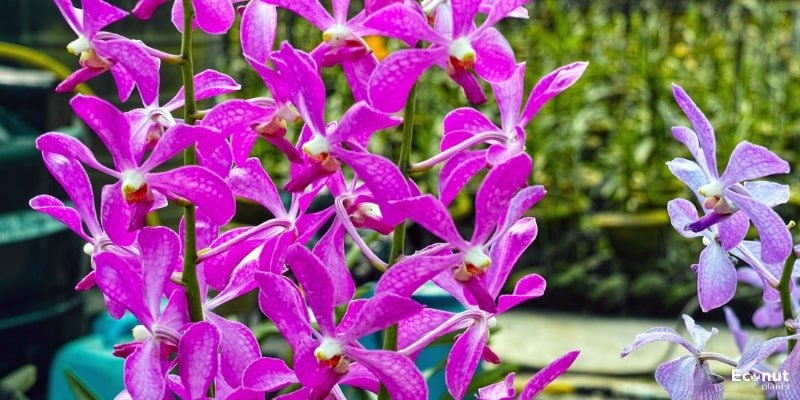
Scientific Name: X Mokara spp.
Plant Size: 15-25 cm
Sun Exposure: Full sun
Mokara orchids are only hybrids that have been cultivated by human botanists, so they cannot be found growing naturally anywhere in the wild. Cymbidium, cattleya, paphiopedilum, and oncidium orchids are among the species that are frequently crossed to create mokara orchids, while they are mostly native to Asia.
They have enormous clusters of vividly coloured starfish-shaped blooms in shades of red, orange, purple, pink, yellow, and white.
17. Dove Orchid
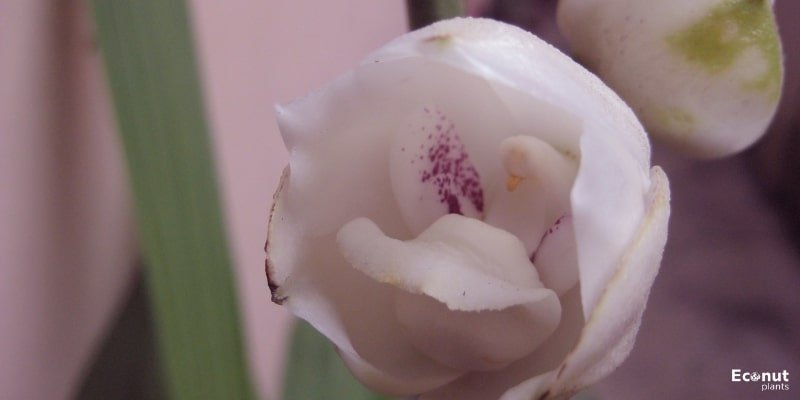
Scientific Name: Peristeria elata
Plant Size: 15 cm
Sun Exposure: Bright, indirect light
The graceful Peristeria elata orchid species bears a center raceme of blooms formed like a cone. Because of the distinctive dove-like shape of a single petal at the center of an alabaster circle of petals, this orchid is also known as the dove orchid.
This orchid is also frequently referred to as the Holy Ghost orchid or the flower of the Holy Spirit since the Christian faith associates the Holy Spirit with doves.
18. Catasetum Orchids
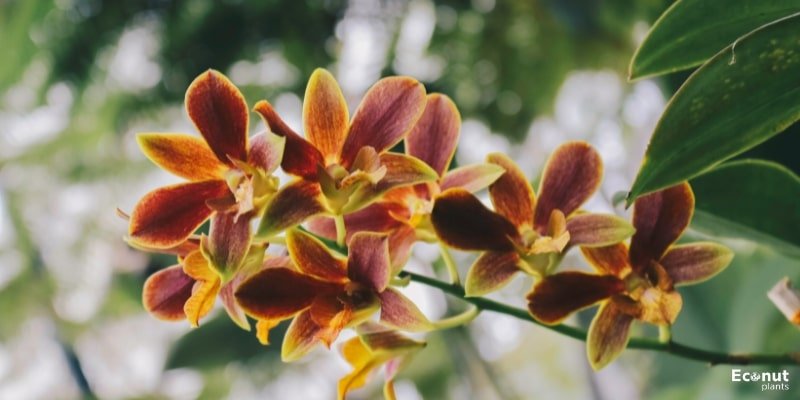
Scientific Name: Catasetum
Plant Size: Up to 3 feet
Sun Exposure: Bright, filtered sunlight
The Catasetum genus of epiphytic orchids is made up of 166 species. These remarkable unisex orchid plants may produce less striking, greenish-white female flowers or more colourful, flamboyant male blossoms. The conditions under which the plant matures determine the sex of the flowers that are produced.
A plant that thrives in moderate environments occasionally produces both male and female blooms. Because of this special quality, many Catasetum orchids were initially considered to be completely separate plants. However, Charles Darwin’s research eventually solved this problem.
19. Spider Orchid

Scientific Name: Brassia
Plant Size: 10-12 Inch
Sun Exposure: Full Sun to Partial shade
The name “spider orchid” refers to plants in the Brassia orchid genus whose petals are coated with long, wiry tepals that frequently give the flowers a spiderlike appearance. From Mexico to Brazil, these orchids are mainly found in warm, humid rainforests.
Nonetheless, a particular type of spider orchid is endemic to Florida and blooms there. Additionally, do not attempt to pollinate spider orchids yourself; only spider-hunter wasps are capable of doing so.
20. Bamboo Orchid
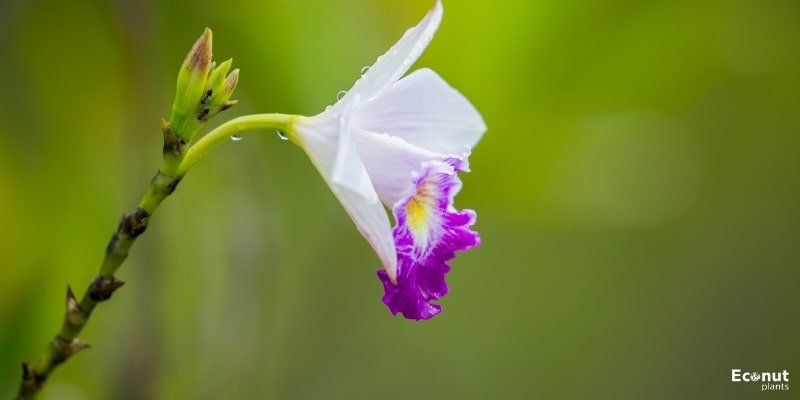
Scientific Name: Arundina graminifolia
Plant Size: 10-12 Inch
Sun Exposure: Direct sun, filtered sunlight
There is now only one species recognized as belonging to the Arundina genus of orchids, which is the bamboo orchid (Arundina gaminifolia). These robust, bamboo-like orchids reach heights of two to seven feet on their reedy stalks.
Up to ten flowers can be seen in each raceme of a bamboo orchid. The beautiful, trumpet-shaped flowers have a vivid purple inner lip and are rosy white in colour.
21. Christmas Orchids
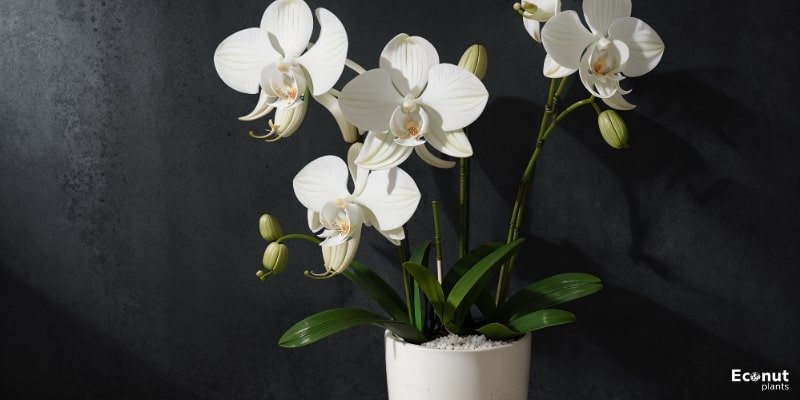
Scientific Name: Calanthe
Plant Size: 5-12 cm
Sun Exposure: Full Sun to Part Shade
The terrestrial orchids in the genus Calanthe grow into enormous, leafy clumps with striking leaves. These evergreen or deciduous plants have a luxuriant appearance due to their large, ovate leaves that are occasionally wrinkled, ruffled, or corrugated. They have towering racemes of yellow, orange, pink, or white flowers.
22. Scorpion Orchids
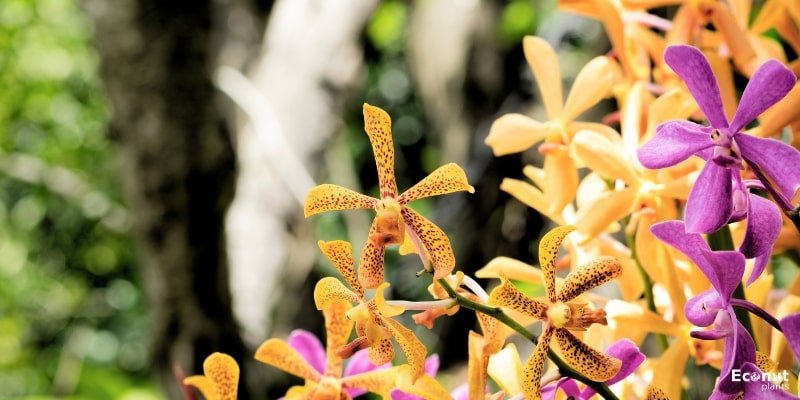
Scientific Name: Arachnis annamensis
Plant Size: 17 cm
Sun Exposure: Bright, filtered sunlight
The Arachnis annamensis flower, sometimes known as a scorpion orchid, has a frightening appearance because of its brownish-red and yellow-striped petals that mimic the body, legs, and stinger of a scorpion. Climbing orchids like these weave their way between trees in tropical rainforests.
23. White Egret Flower
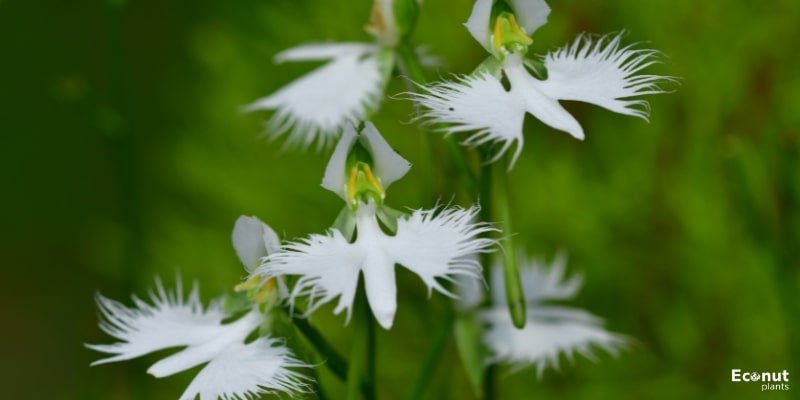
Scientific Name: Pecteilis radiata
Plant Size: 12-18 in.
Sun Exposure: Moderate sunlight to partial shade
There’s little doubt that Pecteilis radiata is among the most exquisitely lovely orchids available. With two pinnate petals on either side of a central white body, its snow-white flowers are dispersed.
The name “white egret flower” comes from the striking resemblance of these terrestrial orchids’ flowers to a snowy egret taking flight.
24. Bulbophyllum Orchids
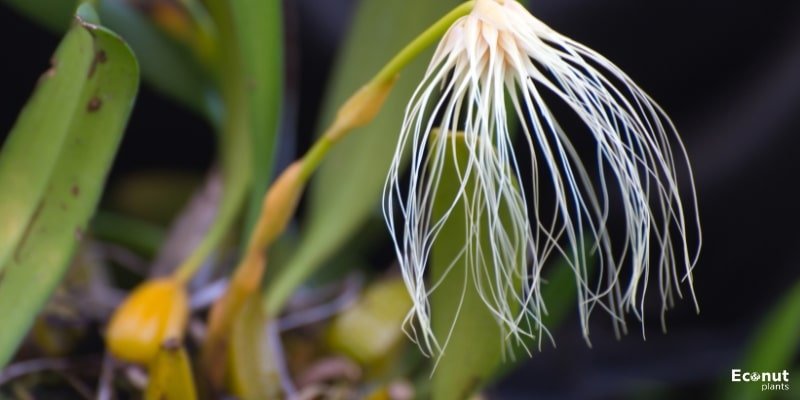
Scientific Name: Bulbophyllum
Plant Size: 10-12 inches
Sun Exposure: Bright, filtered sunlight
Bulbophyllum is the largest genus in the orchid plant family and the second largest genera of all flowering plants, with 2,000 species of orchids.
Although these plants are distributed throughout the world in a variety of warm settings, Papua New Guinea is home to an astounding 600 different kinds of these plants that grow naturally there.
25. Cat’s Tail Orchids

Scientific Name: Aerides
Plant Size: 2 m
Sun Exposure: Bright, filtered sunlight
The Greek term “child of the air” is whence the orchid species Aerides gets its name. As an epiphytic orchid, it receives moisture and nutrients more from its root system than from other plants. Gorgeous pink, purple, yellow, and white flowers in tall racemes bursting with colour adorn these stunning orchids.
Conclusion
If you were wondering why orchids are said to be difficult to grow, you should know after reading this essay why these exquisite plants have overstressed people for so long!
Every orchid has specific growth requirements that must be fulfilled; otherwise, you can very well count on never seeing a blossom. But you may easily position yourself for success if you’re eager to learn about the origins and growing habits of your orchid.

